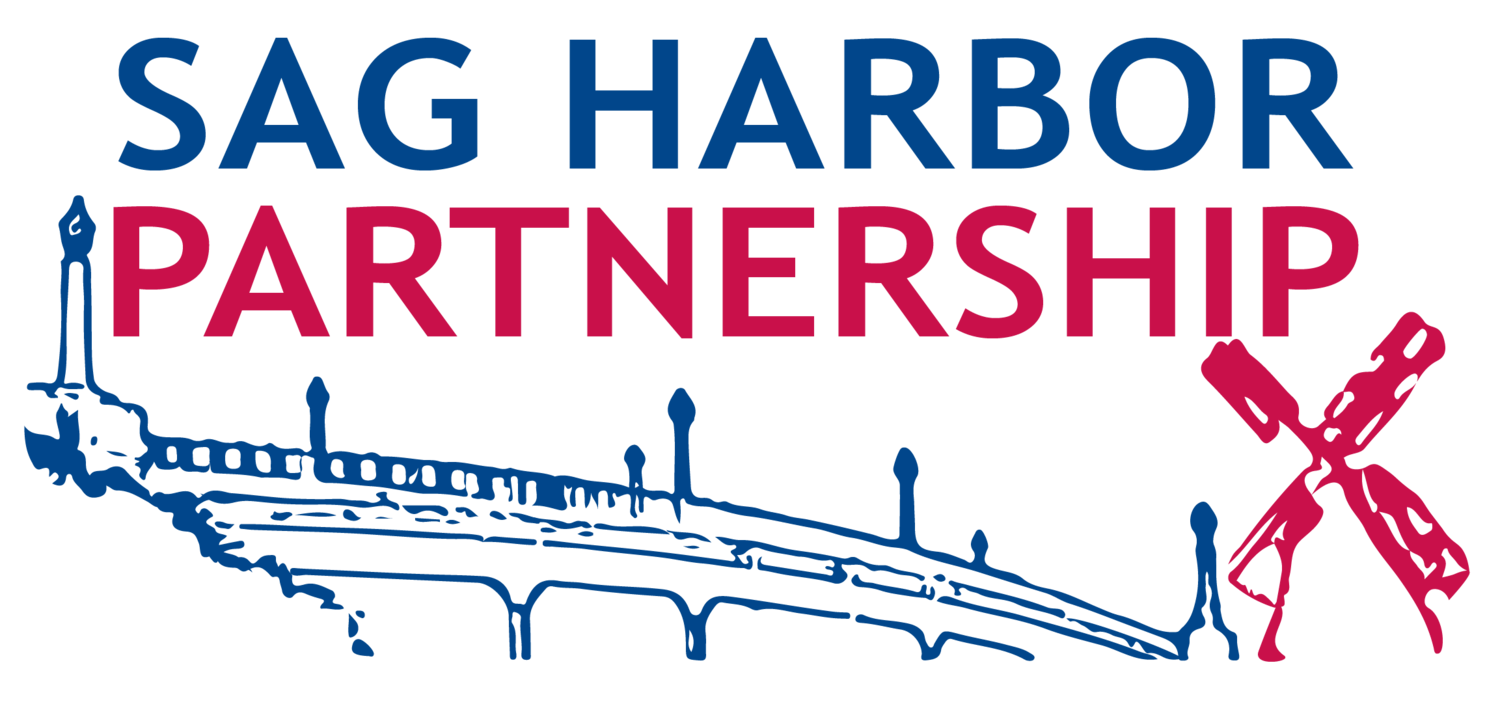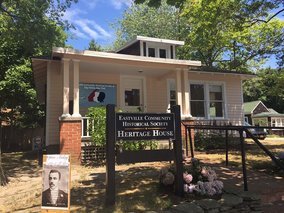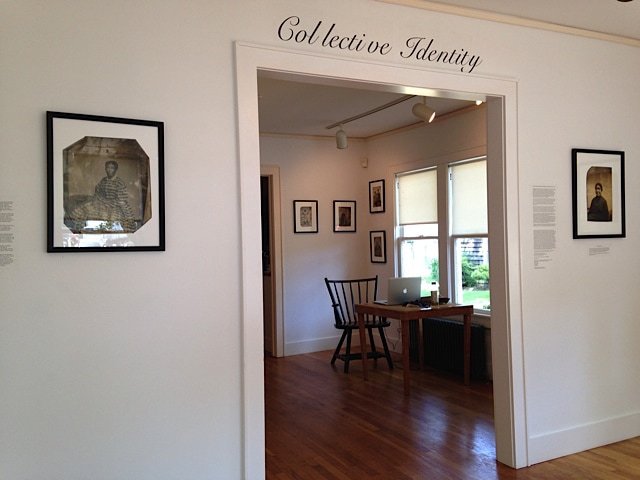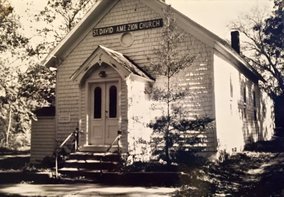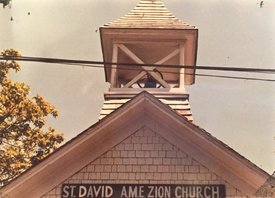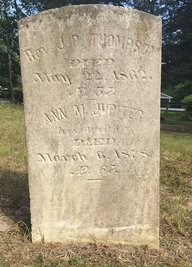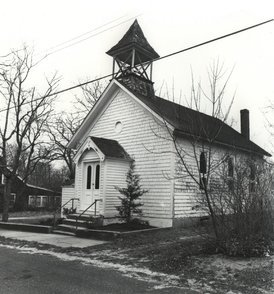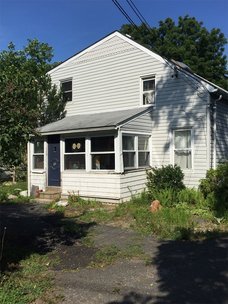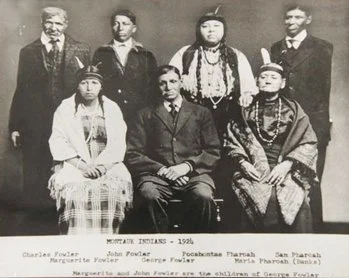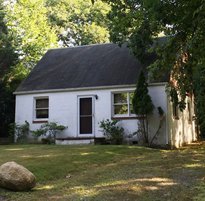EASTVILLE COMMUNITY:
UNIQUE DIVERSITY
The neighborhood of Eastville represents unique and important aspects of Sag Harbor’s history.
This neighborhood formed during the early 19th century around the St. David AME Zion Church and Sag Harbor’s whaling industry. It became a multicultural working class community that drew African Americans, Native Americans, and European immigrants.
As Sag Harbor became a tourist destination in the twentieth century, African American vacationers found lodging in Eastville’s boarding houses and built their own homes and housing developments, leading to its modern identity as a Black waterfront resort community. In 1981, the Eastville Community Historical Society was founded to preserve this rich local history.
*We want to acknowledge and thank Georgette Grier-Key, Donnamarie Barnes, and the Eastville Community Historical Society, upon whose walking tour this one is based, for their time and invaluable assistance in the preparation of this tour.
-
WELCOME TO THE EASTVILLE COMMUNITY HERITAGE HOUSE
-
THE ST DAVID AME ZION CHURCH
-
THE ST. DAVID A.M.E. ZION CHURCH CEMETERY
-
THE UNDERGROUND RAILROAD IN THE EASTVILLE COMMUNIT
-
THE IVY COTTAGE
-
DIVERSITY IN A SINGLE BLOCK
-
NATHAN CUFFEE, EARLY NATIVE AMERICAN AUTHOR
-
16 LIBERTY STREET AND THE GREEN FAMILY
-
38 HEMPSTEAD STREET AND THE PHARAOH FAMILY
-
SNOOKSVILLE
-
DAVID HEMPSTEAD, A FOUNDER OF EASTVILLEem
-
THE CONCERS AND THE WHITEHEADS
WELCOME TO THE EASTVILLE COMMUNITY HERITAGE HOUSE
Start at the Heritage House, 139 Hampton St. Prior to the 1880s, this land belonged to Elymus Derby, an African American man from Shelter Island who was a trustee of the St. David AME Zion Church in the 1850s.
In 1887, Smith Langford, an African American man born in Virginia, purchased the land with his wife Lucinda for $300. Lucinda and their daughter Emma lived in Eastville for almost 40 years, and after Smith’s death, Emma worked in domestic service to help support her mother.
In 1925, Emma Langford sold the land to Rose and Lippman Johnson for one dollar ($1), implying that they had a close relationship. The Johnsons purchased the house that is now on the property from Sears Roebuck, according to their descendants, and had their own candy making business. Based on Sears catalogs of the time, the house probably cost $500- $1500, and the Johnsons reversed the floor plan and modified the windows and porch.
In 1996, The Eastville Community Historical Society, after conducting extensive restoration and oral histories with Johnson descendants, opens the Heritage House as its headquarters and space for exhibits and programs.
Heritage House
Collective Identity Exhibition
Sarah Louisa Parker
THE ST DAVID AME ZION CHURCH
Cross Hampton St to Eastville Ave, where you will find this historic Church on your left. In 1840, Lewis Cuffee, Charles Plato, and William Prime founded the church after they and other Native American and African Americans grew frustrated with segregation at another church in Sag Harbor.
The AME Zion Church quickly became the center of the growing Eastville community. Newspapers show that residents were active in church leadership, women’s organizations, Sunday school, fairs, and fundraising.
One of its first pastors was J.P. Thompson, a known abolitionist who is buried in the AME Zion Cemetery. It has been suggested that Rev. Thompson and Mr. Cuffee worked with the Quakers to facilitate Underground Railroad stops within the community.
An Old Photo of the Church *
The Original Steeple of the Church *
A.M.E. Zion Church Today †
THE ST. DAVID A.M.E. ZION CHURCH CEMETERY
In 1857, Church trustees Samuel Butler, Elymus Derby, and David Hempstead purchased land from Hannah and Anna Maria Solomon to establish a cemetery, which was a site of interment until 1993.
The ECHS gained title to the cemetery and has continued to care for it, with documentation, survey, and preservation continuing today. The new iron fence was installed December 2016, and the Partnership is proud to have been a part of it.
THE UNDERGROUND RAILROAD IN THE EASTVILLE COMMUNITY
Although little is sure about Eastville’s participation in the Underground Railroad, some evidence suggests that it may have played a part. One of the St. David African Methodist Episcopal (AME) Zion Church’s first preachers, J. P. Thompson, was a known abolitionist. The Church has two trap doors, one by the pulpit and one under the library, near the rear of the church, that have been suspected to be connected to the Underground Railroad. The type of people who populated Sag Harbor during the mid-1800s, who included Quakers and abolitionists, were also possible contributors to the anti-slavery effort.
When people think of slaves escaping from the South before, during and after the Civil War, the image one often has, thanks to Uncle Tom’s Cabin, is that of people wading through swamps to their freedom, but it must be noted that many such people were not only leaving the South itself, but would have been escaping from owners whom they had accompanied to places in the Northeast, or whose owners may have moved here with them. Historians of the ECHS believe that Native Americans could have helped such slaves to freedom, using their hunting and fishing routes and their guiding expertise. One such route existed from the Shinnecock Nation lands to upstate New York, which, though not having trap doors and hidden passageways, would have been just as important in assisting people to freedom.
As well as footpaths Native Americans would be familiar with, boats that docked in Sag Harbor could have transported runaway slaves up to Connecticut and Rhode Island, where they would also have been able to travel on foot to freedom in Canada.
Homes on Liberty Street, as well as on Hempstead Avenue, feature hidden trap doors that lead to gritty old cellars. Of course it’s possible that these were only used for cold storage, but the question of their use persists. “Liberty” Street contains even more homes with trap door cellars, and Hempstead Avenue—named after the Hempstead family, known for being slaveholders on Long Island—also features similar houses. A number of families owned slaves on Shelter Island, and its proximity to Sag Harbor would have meant a need for freedom for captive people in our area.
Because of the necessity for secrecy of the Underground Railroad, and the long period of time in which it functioned, historians here have been unable to find definitive proof of it, but there are certainly many indications of its possible presence in Sag Harbor.
Old Photo of Church *
Joanne Carter, Former President ECHS, Pointing to Trap Door in AME Zion Church
THE IVY COTTAGE
Back near and just south of the Heritage House you’ll find 165 Hampton Street: In 1902, this was the home of Virginia Johnson, who worked as a laundress in Eastville. Later in the 20th C, it became known as the Ivy Cottage, a popular hotel and restaurant for African-Americans vacationing and building summer homes in the area. This is also the site where some of the tintypes represented in this tour were found in the mid-1980s by later owner Greg Therriault, now head of the Sag Harbor Whaling and Historical Museum.
Augustus Johnson, a relation of Virginia Johnson, is here represented in an old tintype from the show “Collective Identity”, shown at the ECHS from July – October, 2015. The Johnson family is a remnant of the past that remains in the surrounding communities and is still active within the Eastville Community Historical Society.
DIVERSITY IN A SINGLE BLOCK
11 Eastville Avenue and adjoining land north: This land was part of the property of Elymus Derby and Smith Langford, 19th C. African-American residents. In the early 20th C. it became the site of several cottages owned by the Butler family. They rented out houses to African Americans building their own summer homes in the area in the mid-20th C. In 1850, Elymus Derby’s family included his wife Zipporah and children Austin (who worked as a whaler), Caroline, and Maryann. Derby was one of the Church trustees who acquired and incorporated the St. David A.M.E. Zion cemetery.
A diverse cross-section of cultures worked in the whaling industry, including many from Eastville. Pictured here are photographs from whaling vessels, and an interesting account of life on whaleboats can be found on the New Bedford Whaling Museum website.
In the early 20th C., this site was the home of Samuel Butler and Olive Pharaoh, a Native American family who moved to Eastville from the neighborhood of Freetown in East Hampton. Pharaoh was from the Montaukett, a Native American, Algonquian-speaking people from the east end of Long Island. Such people were eventually identified by settlers by their regions, becoming known as the Montauk and the Shinnecock, mistakenly identified as “tribes”, although they had shared language and culture.
William Wallace Tooker, a self-trained ethnologist who lived at 67 Hampton St (a short walk from Eastville) wrote Indian Place Names on Long Island, published in 1911, which helped preserve the origin of names familiar to many on Long Island as well as the Algonquin language itself. Tooker’s extensive collection of over 1200 Native American artifacts was acquired by what would become the Brooklyn Museum of Art, which raised money for it, recognizing its importance. It should, however, be noted that, in the opinion of the peoples whose culture he thought he was preserving, his possession and subsequent sale of them is considered ill-gotten. It remains a point of contention with the Native American community here.
Cappy Amundsen painting from Sag Harbor Whaling Museum
A Whaling Crew, Photo courtesy New Bedford Whaling Museum
Wm. Wallace Tooker’s Book Indian Place Names on Long Island
11 Eastville Avenue §
NATHAN CUFFEE, EARLY NATIVE AMERICAN AUTHOR
12 Liberty Street and adjoining homes: Miles and Helen Ashman bought their land here in 1856. Helen was a daughter of Lewis and Lucinda Cuffee, early Native American founders of the AME Zion Church, and she lived near several of her sisters and one brother in Eastville. Her first husband, Miles Ashman, was an African American whaler who switched to work as a cook in a hotel by 1880, while their son Charles carried on the seafaring tradition. In the New Bedford Whaling Crew List Database, a Miles Ashman is listed as having been on the whaler “Pacific" in 1862, at the age of 26. Charles Ashman is listed as working on the ship “Three Brothers” in 1875 at the age of 17. He is described as “dark”, height 4’6”, and his residence as Sag Harbor.
Nathan J Cuffee (1854-1912) was born in East Hampton to whaler Jason James Cuffee, a member of the Eastville Band of the Montaukett tribe and Louisa R. Cotton of the Naragansett tribe from Rhode Island. Nathan also grew up here on Liberty Street, spending time at the house 2 doors down, and later moved with his wife Marie to Shelter Island. Nathan co-authored a novel with Lydia Jocelyn called “Lords of the Soil: A Romance of Indian Life Among Early English Settlers” in 1905 which was well-received, making Cuffee the first published Native American from Long Island.
Nathan Cuffee from a Tintype Found Nailed to the Floor of the Ivy Cottage*
Cuffee’s Book Lords of the Soil, written with Lydia Jocelyn
Nathan Cuffee’s Home at 12 Liberty Street §
16 LIBERTY STREET AND THE GREEN FAMILY
16 Liberty Street: This house was Esther Green’s in the 1870s, home to a family of ten to twelve people. Esther, the sister of David Hempstead, was married to a man named Henry Green, and she was the mother of seven daughters and one son. Henry died by 1865, and by 1870 four of her eight daughters were working in domestic service.
In 1880, her son George was also working as a laborer, and their daughter Ida’s husband John Massey, a waiter on a steamboat, also lived with them. Maps show that Esther passed on two different properties after she died, another on Liberty St. and this one.
The House at 16 Liberty
Matriarch Esther Green *
Daughter Priscilla *
38 HEMPSTEAD STREET AND THE PHARAOH FAMILY
38 Hempstead Street: From 1902-1916, this was the home of Edward McMahon, which he built near his father Patrick, an Irish immigrant who lived nearby on Hempstead St. From the early 20th C to the present, this was the home of the Pharaohs, a Montaukett family who remain in the neighborhood.
At the end of the 19th century, the best-known Montaukett was Stephen Talkhouse (Stephen Taukus “Talkhouse” Pharaoh, 1821-1879). He was known to walk 30 to 50 miles round-trip per day from Montauk to East Hampton or Sag Harbor. Legend has it that he walked in one day from Brooklyn to Montauk. Various stones on his routes mark the present-day Paumanok Path hiking trail.
A sad bit of history is that P.T. Barnum hired Stephen Pharaoh and featured him as "The World's Greatest Walker", and the "Last King of the Montauks", despite his being neither a king nor the last Montaukett. The Montauketts were in fact run out of their lands, and were forced to settle in Eastville and other further-flung areas, fracturing their communal living and creating a disjointed society that has hindered them from gaining federal recognition. The 2013 Montaukett Act in the New York Legislature reversed a century-old state declaration that had declared them to be extinct, and they are still fighting for proper recognition.
SNOOKSVILLE
Continuing south to 42 Hempstead Street: Sag Harbor was a U.S. port of entry for European immigrants from 1829-1834. In 1873, this house was the home of an Irish family headed by Thomas and Catherine Snooks Hicks.
The Snooks were one of the neighborhood’s first families and the previous namesake for the community, Snooksville, which later became Eastville for being east of the Village center. Hellen M. Snooks Havens (1824-1885) is buried in Oakland Cemetery. In 1902, a Mrs. McGuire lived here.
The Snooks House at 42 Hempstead §
DAVID HEMPSTEAD,
A FOUNDER OF EASTVILLE
82 Hempstead Street: This house was first occupied by Jane Havens in the 1870s. Census records list Jane as a single woman who worked as a servant, supporting herself and her property at a time when this would have been particularly difficult. David Hempstead and his daughter Mary later owned this property.
David Hempstead was an African American man from Shelter Island who, with his wife Mary and their family, was one of the first settlers in Eastville by 1840. He was involved in the church in many ways, helping out financially, being one among three men to establish the cemetery, and hosting minister James S. Ray’s family in his house in the 1870s. He was also the brother of Esther Green, who headed another multigenerational Eastville family. Hempstead, along with Lewis Cuffee, Charles Plato, and William Prime, started the St. David AME Zion Church.
82 Hempstead St §
David Hempstead’s Gravestone §, AME Zion Church today †
THE CONCERS AND THE WHITEHEADS
88 Hempstead Street: This house was previously a Concer family home. These Concers were cousins of Pyrrhus Concer (1814 – 1897), who was indentured under the 1799 Gradual Abolition Act to Nathan Cooper. We don't make a difference between slavery and indentured servitude, as Pyrrhus Concer was sold at the age of 5 years old to Elias Pelletreau and treated like a slave. He later earned his freedom and became a seafarer, an entrepreneur and died a philanthropist.
Pyrrhus Concer worked on whaleships out of Sag Harbor. In 1845 he was aboard the first American ship to visit Tokyo in 1845, captained by Sag Harbor-born Mercator Cooper when it picked up shipwrecked Japanese sailors in the Bonin Islands. The American boat was allowed to enter Tokyo Harbor under escort to return the sailors and Concer was an important diplomatic presence in what became a friendly exchange. He is depicted in Japanese drawings of the event.
After unsuccessfully going to California for the Gold Rush in 1849, he returned to Southampton where he operated a ferry service on Lake Agwam. A monument to him is by the lake on the northwest corner by Pond Lane. He is buried in the North End Cemetery in Southampton with his wife. His tombstone says:
THOUGH BORN A SLAVE
HE POSSESSED THOSE
VIRTUES, WITHOUT WHICH,
KINGS ARE BUT
SLAVES.
82 Hempstead is now the home of Colson Whitehead, the award-winning author of books including The Intuitionist and Sag Harbor, and most recently the Pulitzer-Prize winning The Underground Railroad. Whitehead also lives in New York and teaches at Princeton. Sag Harbor chronicles his adventures as a teenager in Sag Harbor.
88 Hempstead §
Pyrrhus Concer (Courtesy Southampton Historical Society)
Colson Whitehead
Colson Whitehead, The Underground Railroad
